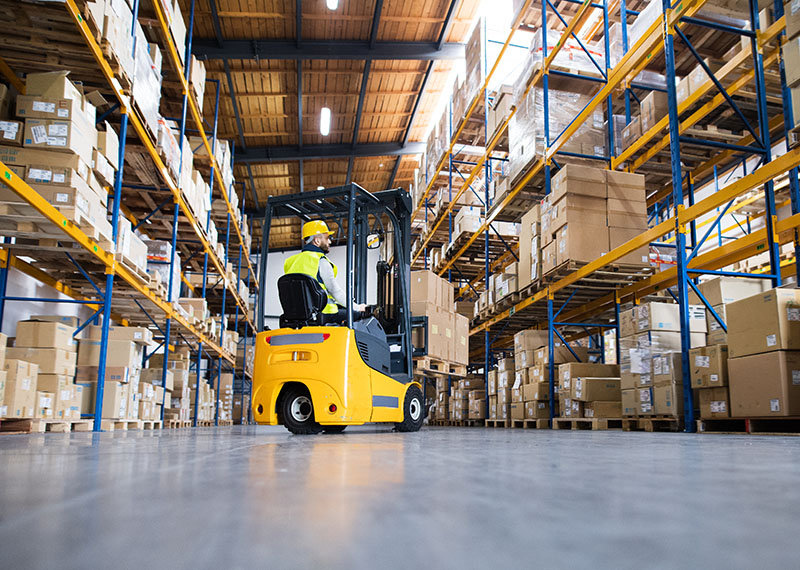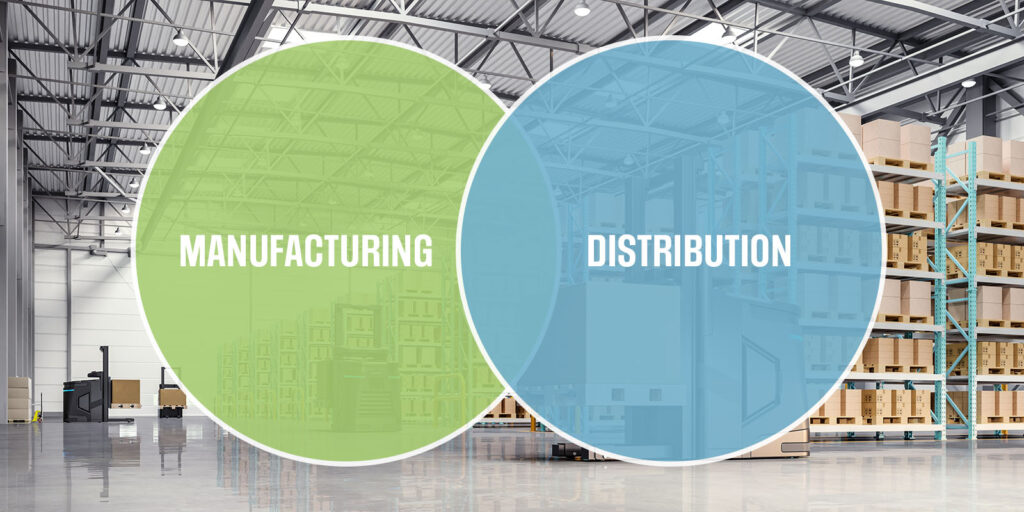03.16.24
Manufacturing vs. Distribution: What’s the Difference?
In today’s global economy, the seamless operations of supply chains totally depend on successful manufacturing and distribution. These two distinct but wholly interconnected processes have a huge impact on how our economy functions. But how should we understand their distinctions and how do they overlap and interact with one another?
For any business to succeed, they’ll need a firm grasp on the worlds of manufacturing and distribution. Today, let’s gain some insight into how products are transformed from raw materials into consumer goods, and follow along in the journey they undertake to reach the market.
What Is Manufacturing?
Manufacturing involves the transformation of raw materials into finished products. The nature of the process involves constant innovation and skilled labor, as ideas become tangible goods. Manufacturers are at the forefront of product creation, integrating modern technologies and strict quality control practices to ensure every item meets exact specifications.
But the role manufacturers play goes beyond production—they drive research and development, tailoring products to meet diverse market needs and consumer preferences. Their impact is undeniably substantial, employing millions and contributing in huge ways to the economy. With globalization driving our international economy over the past few decades, we’ve seen the introduction of incredible complexity, moving more goods cross state and national borders than ever before.
Thus, manufacturing is deeply connected to economic strength and the relationship between domestic production and international trade must be carefully balanced at all times. Decisions made in manufacturing, from cost and quality to delivery and storage, affect every subsequent stage in the supply chain. This highlights the manufacturing sector’s important position in determining overall market dynamics and consumer satisfaction.
What Is Distribution?
Distribution in the supply chain bridges the gap between manufacturers and the market. Distributors buy products in bulk from manufacturers and sell in smaller quantities to retailers and end users to facilitate smooth product flow. Unlike warehouses, typically meant for long-term storage, distribution centers focus on short-term storage and swift product dispatch. These facilities are essential in optimizing order fulfillment and a positive customer experience.
Effective distribution revolves around logistics, storage and a thorough understanding of market demands. Distributors must manage inventory with the utmost efficiency, ensure safe storage and guarantee seamless communication and collaboration within the supply chain to be successful.
Distributors prioritize rapid movement and inventory management to ensure timely product delivery. While warehouses focus more on storing materials as well as finished goods for more extended periods of time, both entities work together to ensure the appropriate flow of goods to the market.
The Role of Warehousing in Distribution

The Difference Between Manufacturing and Distribution
The key difference between manufacturing vs. distribution is how they interact with the goods themselves. In their core functions and interactions, manufacturers directly oversee the production process, while distributors perform intermediary duties, optimizing the flow of goods. There is a strong symbiotic relationship between these two processes, and it’s crucial that both work in tandem to ensure success.
It’s important to note that while the distinction between these two is clearly drawn, each are intricately connected to the other. Neither can succeed without each other—and both must perform with optimal operational efficiency. Ideally, strategic partnerships between manufacturers and distributors enable both sides to leverage their expertise, share strategies and implement tactics to reach their goals in manufacturing and distribution.
Synergy Between Manufacturing and Distribution

This relationship fosters mutual growth and market expansion. Distributors’ in-depth understanding of market trends and consumer behavior supports manufacturers’ ability to align production with market demand. Their logistics’ expertise ensures safe storage and efficient product movement that’s critical for timely delivery and reducing stockouts.
Many businesses function as both manufacturers and distributors, gaining control over both production and distribution to optimize operations and cost efficiency. However, balancing these roles requires a depth of understanding of manufacturing processes and distribution strategies. Such a collaborative dynamic is key to market success and emphasizes the need for more harmonious relationships and coordination between these two sectors.
Integrating Manufacturing and Distribution
As we’ve discovered, the intricate interplay between manufacturing and distribution is of paramount importance for effective supply chain management. Manufacturing, focusing on creating quality products, and distribution, ensuring these products reach market efficiently, are two sectors that work in harmony to drive customer satisfaction and market success.
Understanding each of these areas is essential for any business to effectively navigate the supply chain at large. Their synergy—combining innovation, logistics and strong market insights—highlights the absolute necessity of strategic coordination and collaboration to achieve sustained success in our global marketplace.
Whether manufacturing or distribution, businesses need look no further than the Freeport Center—conveniently located adjacent to, or within close reach of, major transportation sources, including roadways, railways and airways. With 78 buildings, varying in size from 4000 to an amazing 40,000 square feet, on an expansive 680-acre campus, we can accommodate businesses all of types and sizes, We accommodate centralized manufacturing, distribution and warehousing tenants, as well as those needing one, or any combination, of these critical logistics to business success. When needing accommodations for your business, look no further than the Freeport Center. Contact us today!
Common Questions & Answers
ow can businesses minimize the environmental impact of their products across the supply chain?
Manufacturing and distribution can both be done in a way that considers the environment. Many companies are adopting sustainable practices like using renewable energy sources in manufacturing facilities, reducing packaging waste with eco-friendly materials, and optimizing transportation routes to minimize emissions.
Are there ways to optimize costs throughout the manufacturing and distribution process?
Absolutely! Businesses can find efficiencies throughout the supply chain. For example, some companies outsource manufacturing to regions with lower production costs, while others invest in automation to streamline distribution processes. Both approaches can lead to cost savings that benefit the business and the consumer.
Are there regulations I need to follow for both manufacturing and distribution?
Yes, both stages have regulations. Manufacturing regulations vary depending on the industry and location. They can address safety standards, environmental protection, product quality, and labor practices. Distribution regulations focus on transportation safety (vehicle maintenance, driver hours), product handling (perishable goods, hazardous materials), and customs compliance (import/export).
What kind of skills are needed for manufacturing and distribution jobs?
Manufacturing jobs require technical skills like operating machinery, using quality control procedures, and understanding production processes. Engineering and design skills are also needed in some areas. Distribution jobs require skills in logistics planning, inventory management, warehouse operations (picking, packing, shipping), and transportation coordination. Strong communication and problem-solving skills are important in both sectors.

